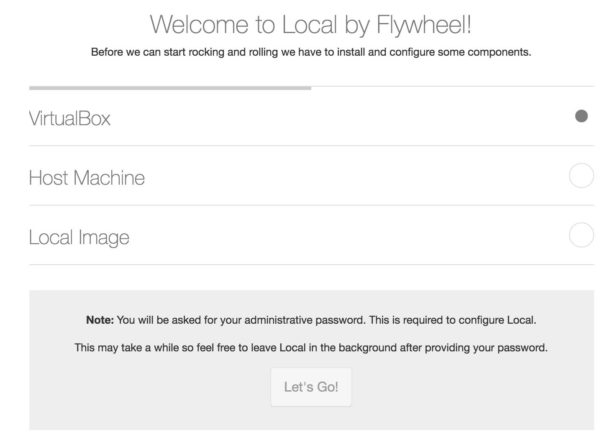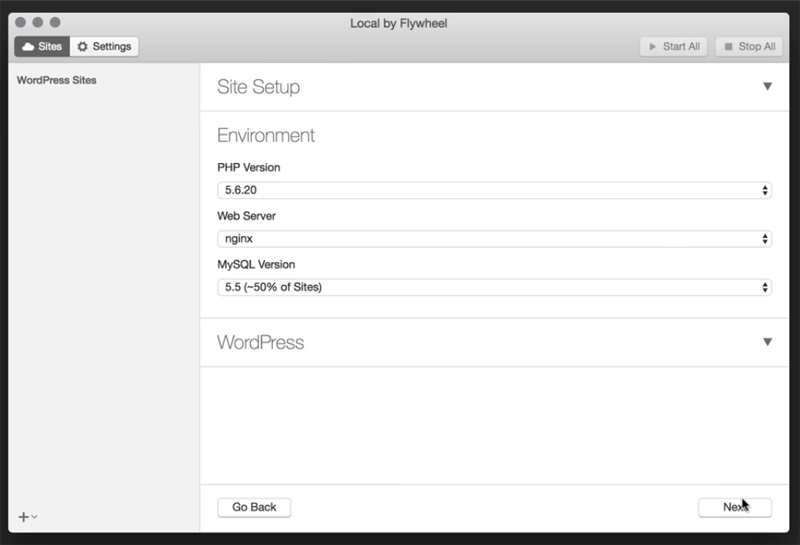

- #Local by flywheel tutorial how to
- #Local by flywheel tutorial install
- #Local by flywheel tutorial code
This will place the SQL file in the folder from where you’ve run the command. If you don’t know the username and the password, you can read them in wp-config.php. This will also ask you the password for the database. Here you need to define your username and the name of your database. Exporting SQL from MySQL mysqldump -uUSERNAME -p DATABASE > backup.sql If you have an SSH connection to that site and you can access MySQL on that site, you can get everything by using SSH because it will be much faster. Some hosting providers will have an option to export the database and you’ll probably get an SQL file. When we’re working with such large databases, you will probably get them gzipped. This is an obvious step, right? You will need to get the database. If not, you can still follow most of it (ignore the downloading part). This tutorial will also assume that you have commands such as ssh, tar, scp and gunzip installed on your environment.
#Local by flywheel tutorial install
If you don’t have Local By Flywheel, please go download it and install it so you could follow this guide.
#Local by flywheel tutorial how to
In this tutorial, I’ll show you how to migrate such large databases in Local by Flywheel through SSH. But what if your site has large databases (read tens of GB), what to do then? If their site is not a big one, you’ll also have no problem using some of the existing solutions such as WP Migrate DB Pro and alike. If you’re using Local by Flywheel the site is hosted on Flywheel, you will have no problem. All you have to do is say how you want your environment configured and site to function, and the application does the rest.Working with clients with WordPress sites can be difficult when you have to migrate their site locally so you can develop on it. Using LOCAL by Flywheel the process of setting up and mainlining these containers is done automatically by the application. That may sound complicated and on the back end it is which is why LOCAL by Flywheel exists in the first place. That means each site is fully separate and each site can have its own custom hosting configurations.

When you create a new site under LOCAL, you create a container, a virtual computer living inside your computer with its own MySQL, Apache or NGINX, and php setup. LOCAL by Flywheel does things a little bit differently. And if you use an application like MAMP or WAMPserver, an environment is set up on your computer and you can host as many sites as you like under that environment. To set up WordPress on your site, you need all of these three things.
#Local by flywheel tutorial code
Well for WordPress to work, it needs an environment with three main components, a database powered by MySQL, a web posting environment, typically Apache or NGINX and php support for server side rendering of code and templates. So how does LOCAL by Flywheel work? And what makes it different from the other options. That said LOCAL by Flywheel can be used to develop sites for any hosting, you just don't have that convenient one click to deploy option.

Flywheel is a hosting company, and LOCAL is a tool offered by Flywheel to make developing sites locally and applying them to Flywheel hosting as easy as possible.

The name LOCAL by Flywheel also hints at its origins. Well LOCAL by Flywheel is another branch on that same tree. You may have encountered applications like DesktopServer, XAMPP, MAMP, WAMPServer, and Bitnami in the past. LOCAL by Flywheel is a relatively new option in the world of local WordPress hosting.


 0 kommentar(er)
0 kommentar(er)
